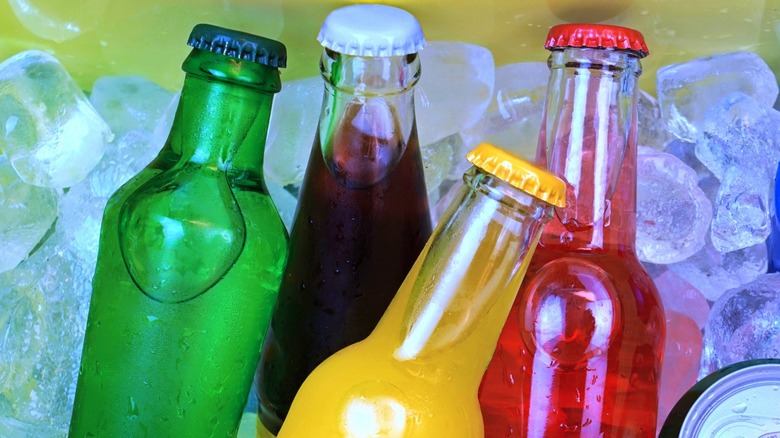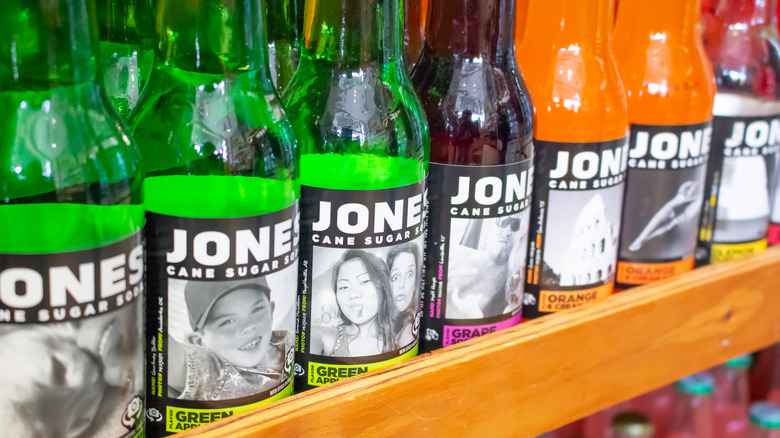The Reason Craft Sodas Are So Expensive
While many folks prefer indulging in Coca-Cola, Sprite, and Dr Pepper, there exists a population of consumers who crave nostalgia-inducing sodas that taste like blue raspberry, black cherry, açaí, prickly pear, orange creamsicle, and even butter, grass, and ranch dressing. Thankfully, treasured brands such as Sprecher, Jones, Boots, Rocket Fizz, Point, and Jolly Good are known for creating such flavorful, colorful bottles and cans of effervescent goodness. The elements that make these bubbly brands differ greatly from the mainstream giants don't stop at their funky flavor profiles. If you're bold enough to sip beyond the well-established classics, you'll likely pay a pretty penny. Here's why.
While craft sodas, sometimes called artisanal sodas, offer a fun and imaginative alternative, they can also be quite expensive compared to their mass-produced counterparts. Many craft soda companies pride themselves on using more natural ingredients such as real fruit and vegetable juices, sweeteners like cane sugar or honey, and high-quality botanicals, extracts, essences, and spices. The distribution process also plays a role in the price point of craft sodas. Unlike the mega-popular, conventional sodas sold across the country and even internationally, craft sodas are typically distributed locally or regionally, which can result in higher transportation and storage costs.
Craft sodas are valuable, delicious works of art
Since craft sodas are generally made in smaller quantities, they may not be available year-round or have an overall limited availability. This novelty factor creates a sense of scarcity, thereby driving up demand and, in turn, boosting prices. Despite these challenges, plenty of consumers are happy to pay a premium for the unique, high-quality experience craft sodas provide. Craft soda can also be a fantastic alternative beverage option for people who do not consume alcohol but still want a drink that goes beyond a regular soda, especially when dining out. While some restaurants offer mocktails, bottled and canned non-alcoholic beverages are arguably easier menu additions. According to Forbes, the non-alcoholic drink market is booming: In 2022, these tasty beverages exceeded $11 billion in value.
By supporting local producers and keeping open minds to trying new flavors, consumers can enjoy a tasty, refreshing beverage that is a far cry from the big-name sodas that have dominated the market for decades. As the adage goes, Rome wasn't built in a day. Some of the best foods and beverages on the planet require a generous serving of TLC. The small-batch production process for craft sodas is usually slower and more hands-on since it requires extra careful attention to detail. The result? A lavish, steeply-priced pop — but one that's worth it.

